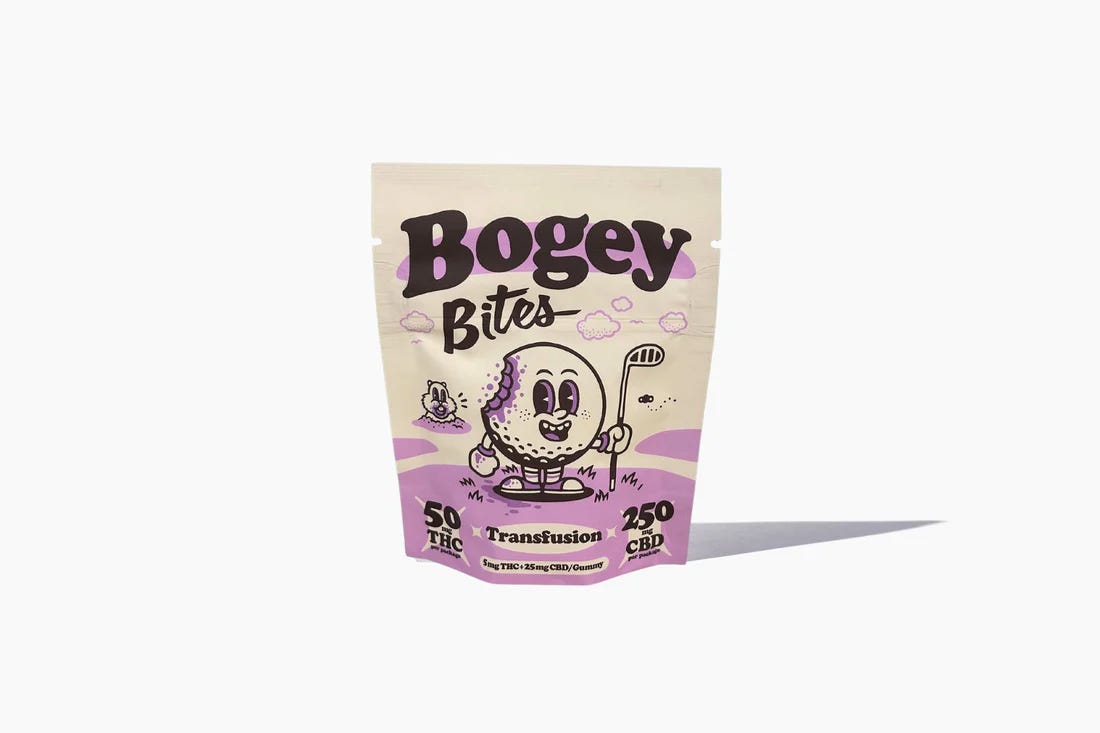THC in Proper Dosage May Positively Impact Golf Performance
As the legalization and decriminalization of THC and Delta-8 products sweep the nation, their use in golf is becoming more mainstream, with some studies showing that THC use can correlate with game improvement.
Tetrahydrocannabinol (THC) is a cannabinoid, specifically the trans-Δ9-tetrahydrocannabinol isomer known as Delta-9, which is a psychoactive molecule. THC in various forms is approved pharmaceutically in the US for nausea relief and disease-induced anorexia, and in Europe for neuropathic pain and spasticity. Simply put, THC can help with pain relief, movement problems, increase appetite, and reduce nausea.
The two most common methods of THC administration are inhalation (smoking) and oral consumption (eating). The onset of effects differs: smoking reaches peak levels after 10 minutes and can result in greater absorption of the molecule. Ingested THC can take between 1.5 to 4 hours to take effect, with the metabolite (11-hydroxy-THC) being more potent. High-fat meals can increase the absorption of THC. For those looking for rapid onset, smoking is ideal; for sustained effects, ingestion is better, especially when combined with a high-fat meal.
Once in the system, THC directly interacts with cannabinoid receptors. The level of psychoactive effects may vary from individual to individual and is dose-dependent. Those new to THC use may want to start slow to determine the right amount for them.
Golf Digest explored golf performance and THC dosage, measuring distance off the tee, approach accuracy, and putting success percentage.
“Bringing each player's THC consumption to 18 milligrams seemed to be the sweet spot, with all three players improving on distance, two of three improving on approach accuracy, and two of three making four out of five putts. Welcome to 'The Zone,' gentlemen.”
Players in the study described feeling less apprehension about going for it and experienced increased distance even with higher doses than 18mg, but with diminishing returns on approach shots and putting. Due to its use of smaller stabilizing muscles, putting was most negatively affected by larger doses of THC.
“A little bit of marijuana—in this case, around 18 milligrams—can help to relax muscles and calm nerves, aiding distance and overall tee-to-green performance. Consuming more than that, however, can interfere with focus, energy, hand-eye coordination, and lead to the munchies.”
Participants in the study inhaled their THC, so a user looking to ingest THC may want to consume less than the optimal 18mg dose, as ingested THC has additional potency.
Seen as an alternative to alcohol for relaxation on the golf course, THC offers additional benefits. Without the need to consume alcohol, efforts shift to hydration instead of inebriation when it comes to liquids. This reduces the likelihood of dehydration and a hangover.
Any golfer who has been on a buddy’s trip is familiar with the golf-related hangover. Hours of drinking in the sun can cause serious pain the next morning, which could derail your next round. Alcohol affects the Glutamate-GABA system, increasing GABA, reducing inhibition, and sometimes anxiety. The rebound from a long day of drinking can have the opposite effect, resulting in a day filled with anxiety and a pounding headache. THC interacts with its own receptor site and, aside from morning tiredness, does not have the lingering side effects of heavy drinking.
The rise of THC couldn’t have come at a better time, as golf-specific trips and golf-only resorts have become the new normal. Places like Sand Valley, Bandon, and Cabot Citrus Farms offer some of the best golf in the U.S. along with on-site lodging (sometimes required). Their relatively isolated locations tend to prompt more relaxing nights in—perfect for THC.
THC is commonly consumed in three ways: smoking, drinking, and eating. Referred to as "flower," smoking weed is still the most common form of use. Eating and drinking THC are more commonly accepted practices for bars, resorts, hotels, and golf courses to stock and distribute. The shelf life of beverages and edibles outlasts the expiration date on flower. It is recommended that both THC-savvy individuals or institutions interested in selling products begin with edibles and drinks to reduce the risk of loss and provide a more approachable entry point for those new to cannabis.
As the popularity of THC continues to grow and legalization stretches across the US, its use on golf courses follows. The benefits of THC can mimic alcohol by lowering inhibition, reducing pain, and calming spasticity—but without the secondary side effects of hangovers and rebound anxiety. THC is a psychoactive molecule and should not be used when driving or operating large machinery, but up to 18mg of THC can lead to better golf outcomes.
Bogey Bites Available: https://www.superiormolecular.com/collections/gummies





